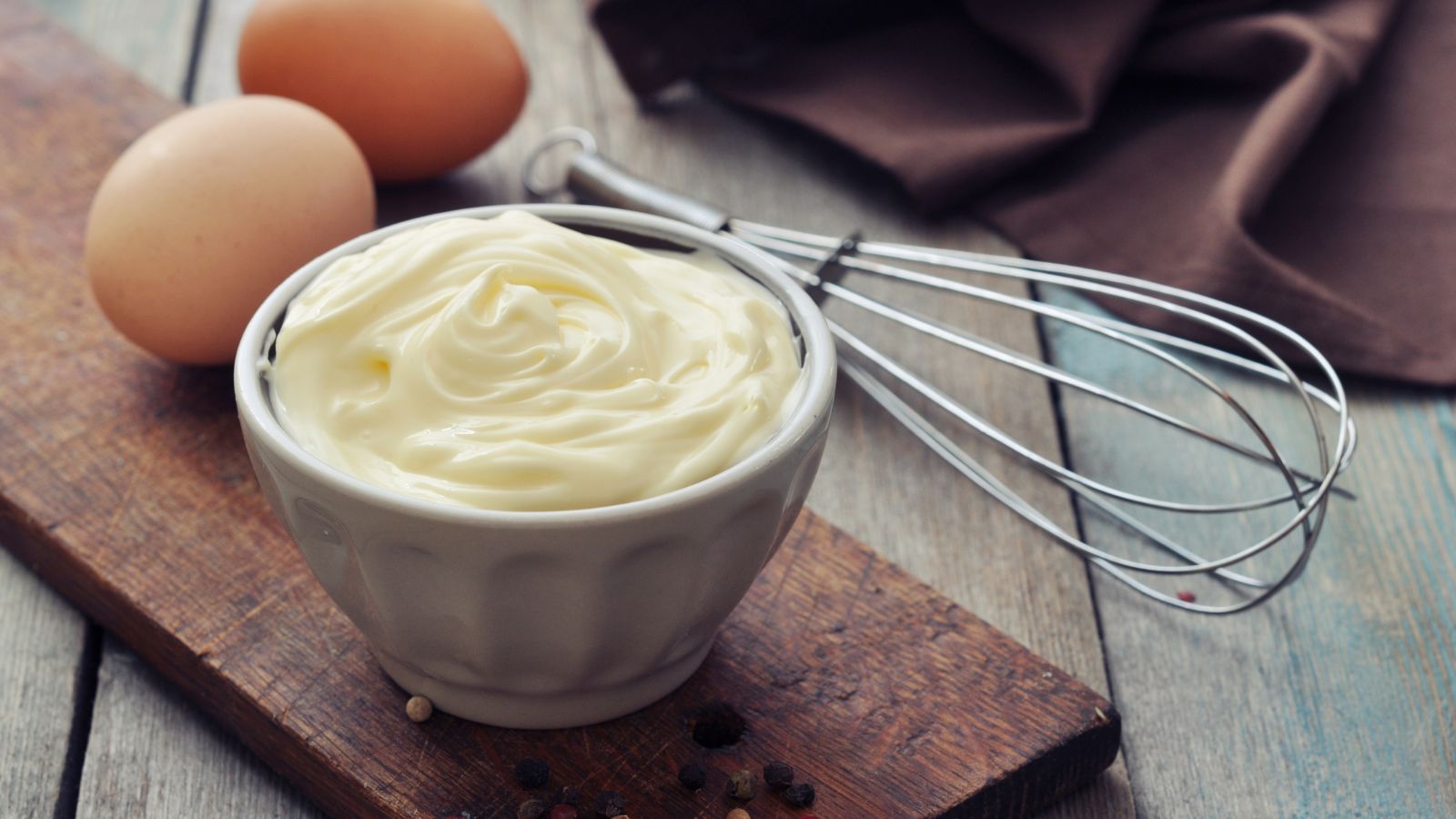
Does Mayo Go Bad? Shelf Life, Spoilage, and Safety Tips
Photo Credit: Canva Pro
Many people wonder. does mayo go bad?. It's a common condiment that you can find in most kitchens. Simply put, yes. Egg yolks and improper storage conditions can contribute to microbial growth and spoilage.
What to do if you eat bad mayo, how to tell if it's bad, and safe options for people with dietary needs are all covered in this article.
Does Mayo Go Bad?
Photo Credit: Canva Pro
You can find mayonnaise on a lot of foods, like sandwiches, salads, and dressings. Many people do, though, wonder, "Does mayo go bad?". It does. Due to ingredients like raw egg yolks, both commercially made mayo and homemade mayo have a short shelf life. Knowing why and how food goes bad helps you stay safe and avoid getting sick.
The Role of Ingredients in Spoilage
To make the mayo's creamy texture, you mix egg yolks, oil, and an acid like vinegar or lemon juice. These things make it taste good, but they can also cause bacteria to grow if you don't handle it right.
-
Commercially made mayonnaise: Commercially made mayonnaise typically contains pasteurized egg yolks, not egg whites, and added preservatives to extend shelf life.
-
Homemade mayonnaise: Often made with raw eggs and no preservatives, so it goes bad faster.
-
Commercial mayonnaise vs. homemade: The first is safer to keep for a longer time, while the second needs to be used quickly and kept cool.
Common Signs Your Mayo Has Gone Bad
If the jar looks fine, expired mayo can still contain bacteria that are harmful. Check before you eat mayonnaise every time and trust your gut.
-
Color change: This thing changes color from white to yellow or brown.
-
Sour smell: A smell that is strong, acidic, or stinky is a clear sign.
-
Texture change: Mayo that is lumpy or broken up should be thrown away.
-
Mold: If there is mold, it's not safe.
-
Bad taste: If it tastes bad, throw it away right away.
How Long Does Mayonnaise Last in the Refrigerator?
Photo Credit: Canva Pro
How long does mayo last? What kind and how it's kept affect that. It stays fresh longer when you buy mayonnaise instead of making it yourself. When mayo is opened, it's important to keep it in the fridge to keep it safe. If you know how to store food correctly, you can keep your family healthy and avoid getting food poisoning.
Shelf Life of Opened Mayo
When mayo is opened, it usually needs to be kept cold. Mayo that has been left out for even a few hours can go bad or expire.
-
Commercially produced mayo: Once opened, it stays good for up to two months in the fridge.
-
Homemade mayo: When made with raw eggs, it should be used within 4 days.
-
Mayo-based dishes: Three to four days is the longest time that food like potato salad can stay safe.
Safe Storage Practices
By storing things correctly, you can stop harmful bacteria from growing. Check the date on the can and always store mayonnaise in a clean, cool place.
-
Refrigerated mayonnaise: The temperature should always be below 40°F.
-
Date jars: Label them when you open them to keep better track of them.
-
Use clean utensils: By double-dipping, bacteria can get in.
-
Do not leave mayo out: If it stays at room temperature for more than two hours, throw it away.
What to Do If You Ate Bad Mayonnaise?
Photo Credit: Canva Pro
Symptoms of foodborne illness from spoiled mayonnaise can develop within hours to a few days, depending on the type of contaminant. Food poisoning can happen from old mayo, especially if it has raw egg yolks in it. It's easier to get better if you know how to deal with symptoms right away.
Recognizing Food Poisoning Symptoms
Food poisoning from old mayonnaise can happen quickly or slowly over time. You may have different symptoms, but some are more common.
-
Upset stomach: Getting sick, cramps, or bloating.
-
Vomiting and diarrhea: Common signs of foodborne illness from contaminated mayonnaise.
-
Dehydration: Due to vomiting and losing water.
-
Fatigue: Being sick makes you feel weak or dizzy.
Safe Recovery Methods
If you ate mayo that has gone bad, take care of your body and look out for signs of bad reactions. Most cases go away in 48 hours or less.
-
Replace fluids: You can drink electrolyte drinks, water, or broth.
-
Rest: Your body needs some time to heal.
-
Eat bland foods: Once your stomach feels better, eat toast, rice, bananas, and crackers.
-
Avoid triggers: Until you feel better, don't eat or drink anything with caffeine, alcohol, dairy, or spice.
-
Seek help: If your symptoms get worse, you should see a doctor right away.
Is There a Safer Alternative to Regular Mayonnaise?
There are safer alternatives to mayonnaise if you're worried about food safety or have to follow a certain diet. You can lower your risk of food poisoning with a number of products on the market, or even by making your own mayonnaise if you don't eat eggs, are worried about getting sick from food, or just like clean ingredients.
Allergen-Free and AIP-Compliant Mayo Options
Some brands sell mayonnaise alternatives that don't contain eggs and can be stored for a long time for people who are on a strict diet or who want to avoid allergens. These choices can help you stay healthy and avoid getting sick from old mayo or jars that weren't stored properly.
-
AIP-friendly: The Autoimmune Protocol-friendly mayo doesn't have eggs or other common allergens in it.
-
Shelf stable: Some jars are shelf stable when unopened and properly stored.
-
Egg-free: A lot of people stay away from raw eggs, which lowers the risk of getting sick.
-
Best by date matters: Even for these alternatives, you should always check the dates they expire.
Benefits of Clean-Ingredient Mayo
You can be more sure of the freshness and ingredients if you make your own mayo or choose a cleaner version.
-
Homemade mayonnaise: It is safer to make with pasteurized eggs and put it in the fridge right away.
-
Avoid room temperature: No matter how long you leave it out, never leave mayonnaise open for more than two hours.
-
Check the jar: If the opened jar shows mold or smells funny, throw it away.
-
Fridge use: Keep opened mayo in the fridge at all times to make it last longer.
-
Food safety tip: Do not eat mayonnaise past the expiration date, even if it looks fine when it's an unopened mayonnaise.
Final Thoughts
Does mayo go bad? While not stored properly, mayonnaise can go bad very quickly. Maintain the mayo jar in the fridge at all times, and don't trust it if you can see mold on it. If something seems completely safe, there may be bacteria in it.
The best bet is to use by the best-by date and check the taste and smell before using. Ingredients like oil and eggs can quickly grow bacteria, whether they are in a sandwich, chicken salad, or the pantry. Avoid getting sick by handling mayo and always keeping it in the fridge.
FAQs
Can mayonnaise cause foodborne illness?
Yes. Homemade mayo or improperly stored mayonnaise can allow bacteria to grow, whereas commercial mayonnaise is generally formulated to inhibit bacterial growth through low pH and preservatives.
Is a jar of mayo in the pantry perfectly safe?
No, once opened, the jar must be in the refrigerator. Pantry storage is only safe for unopened mayonnaise. Opened mayo stored outside the fridge is not safe.
What if my mayonnaise passed the best by date but smells fine?
Even with no bad smell, bacteria can still grow. Discard if past the best-by date.
Can I use mayonnaise with visible mold?
No, visible mold on any jar means it's unsafe, even if the other ingredients look clean.
Does mayonnaise flavor change if not in the fridge?
Yes, without fridge storage, the flavor and texture change due to bacteria and oil breakdown.

Leave a comment